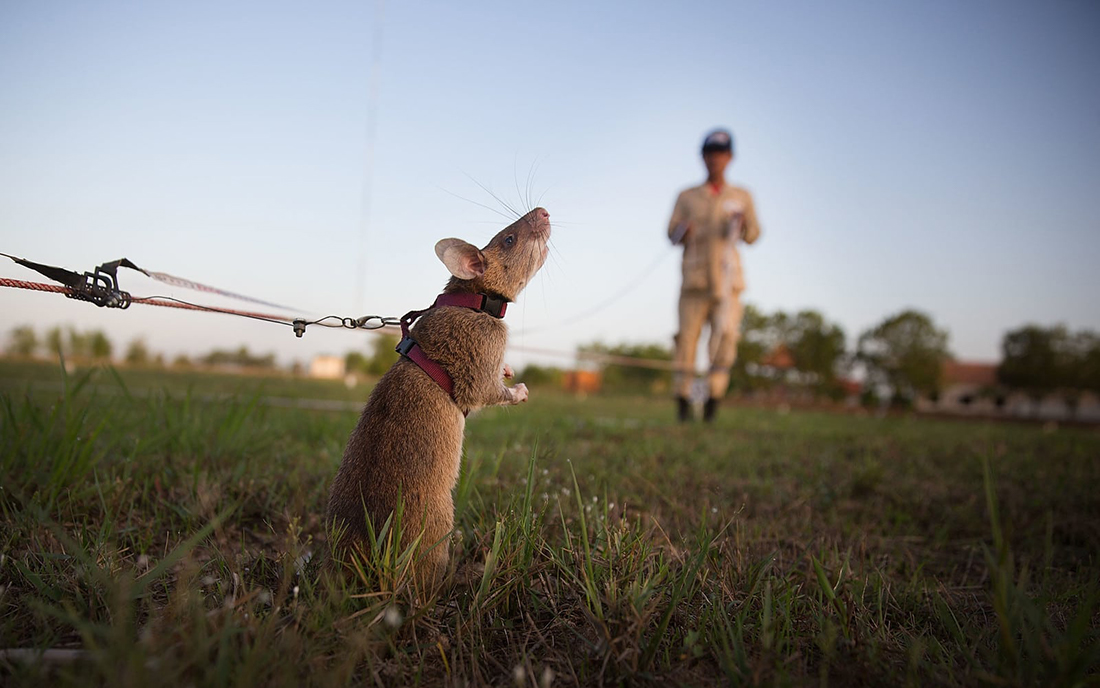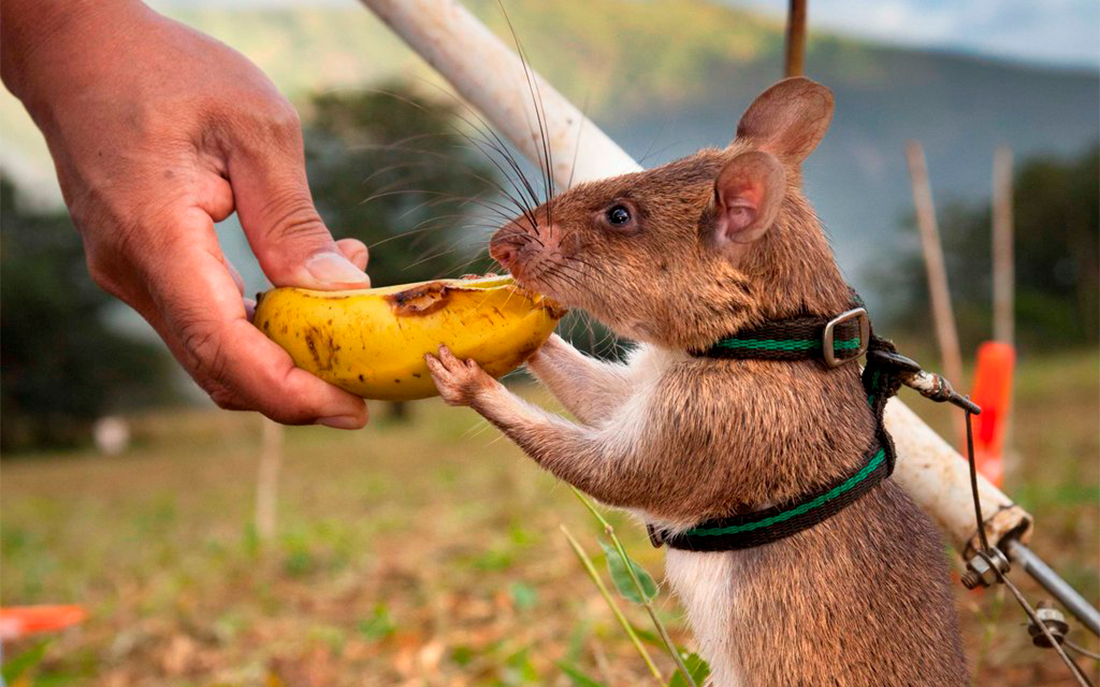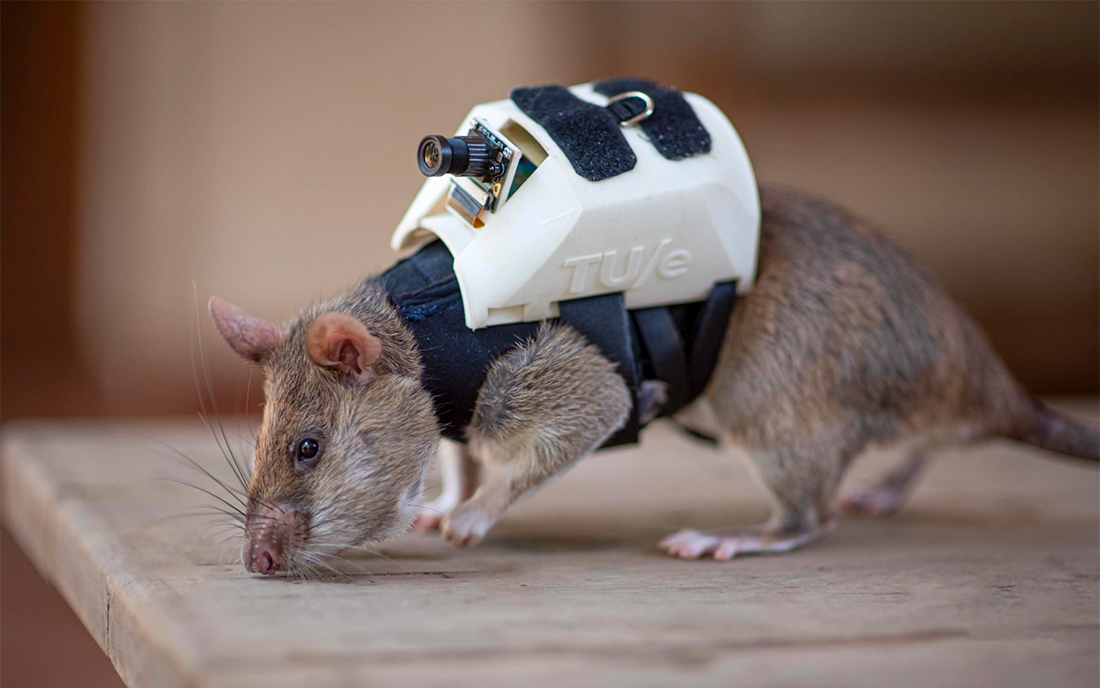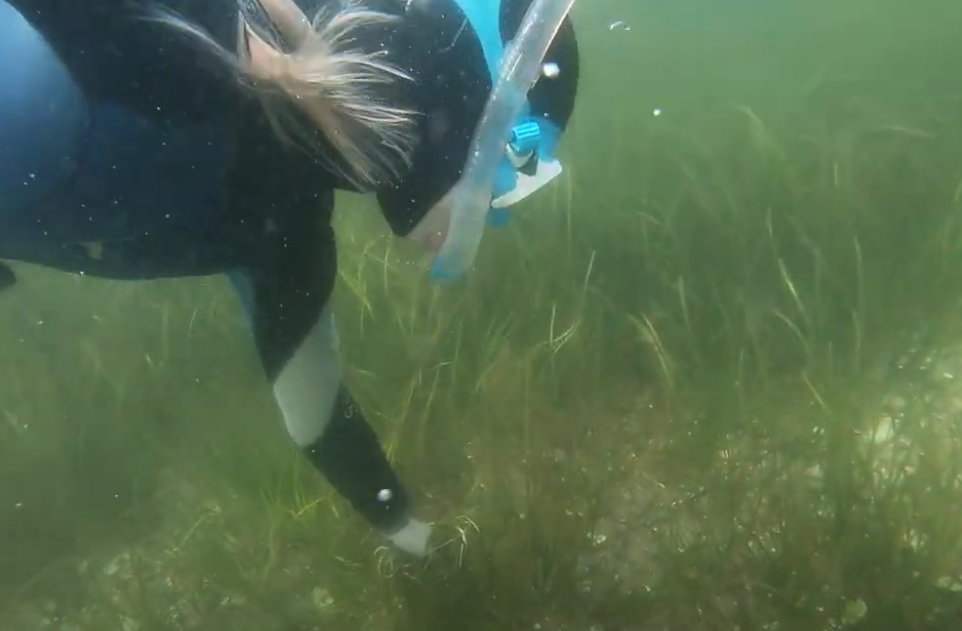Big time for small rodents: Rats in search of landmines, infectious agents and buried victims

The organization Apopo takes advantage of the African giant hamster rat’s highly developed sense of smell. It has spent the last 25 years preparing these affectionate rodents to detect two of the deadliest threats on the planet: Land mines and tuberculosis. Both emit their own odor, undetectable to humans, which the rats can quickly sniff out. Soon, new areas of operation are to be added.
It’s been 25 years since Bart Weetjens told his friend Christophe Cox about an idea after watching a documentary about land mines. Weetjens, who as a teenager had trained his own pet rats to find hidden objects, wondered if rats could be trained to detect landmines hidden in the ground. While searching for solutions, he came across a publication that used gerbils as odor detectors. With a team of dedicated supporters, Weetjens presented the project to the Belgian government in November 1997 and received an initial grant to test the idea. Thus began the success story of the Belgian NGO Apopo. Apopo stands for “Antipersoonsmijnen Ontmijnende Productontwikkeling,” or Development of Products for Landmine Clearance. A unique method was developed in which trained tame rats quickly and reliably detect landmines. Today, Apopo is a world leader in the field of olfactory detection animals and plays an important role as a research organization in the development of new humanitarian and environmental applications.
Landmines remain a major challenge
The focus remains on eliminating landmines that kill and mutilate uninvolved people. Half of all civilian casualties are children. The prevalence of landmines hinders development in post-conflict areas. Everyday tasks such as safely cultivating land and raising livestock, providing a safe environment for children, and feeding families become major challenges.
Even 25 years after the Ottawa Convention banning landmines, there is still much to be done. To date, up to 100 million landmines and other explosive remnants of war remain buried in the ground in 60 countries. However, global financial support for demining is declining, so faster detection of landmines is needed. Apopo’s goal, therefore, is to accelerate the pace of demining. To achieve this goal, tracking animals could be the key, as they are faster, more successful and cheaper than conventional methods – or complement them in a useful way.

Apopo calls their African giant hamster rats HeroRATs, which can grow up to 45 centimeters in size, the tail comes on top. Rats have an exceptionally sensitive sense of smell and are also very smart, adaptive animals. The rodents are trained to sniff out explosives. When searching, they are led on leashes like dogs and can find mines buried up to 20 centimeters underground. The trick: their low body weight does not itself trigger an explosion. The animals ignore metal scrap and only detect the smell of explosives, resulting in a hit rate 50 times higher than metal detectors. If the animal sniffs out explosive materials, it paws in the ground to alert the mine defusers. At this sign, the rat receives a reward since day 1 of training. A well-trained rat can search an area the size of a tennis court within half an hour. By comparison, it would take four days using a metal detector.
Since the life expectancy of the animals is up to eight years, the intensive nine-month training up to IMAS (International Mine Action Standards) certification is well worth it. So the rat has a clear advantage, especially over traditional mine detection dogs as well as the state-of-the-art Technical Survey Dogs (TSD) that have been trained since 2017. It learns faster, uses less food, and a larger number of animals can be transported to the areas to be searched with far less effort. The combined use of HeroRATs and HeroDOGs ensures optimal efficiency due to their complementary roles: rats are great for clearance, while dogs are great for technical surveillance. The prior use of technical sniffer dogs is used to prove that large areas are free of mines and to precisely determine the boundaries of contaminated areas.
Apopo operates worldwide with professionally trained animals
Currently, Apopo is active with 300 rats in seven countries, including Cambodia, Tanzania, Angola, Zimbabwe and, most importantly, Mozambique, where it played a key role in the country receiving “mine-free” status in 2015. Teams with Detection Dogs and HeroDOGs are deployed in three other countries: South Sudan, Azerbaijan and Turkey.
According to Landmine Monitor, Cambodia is one of the most heavily mined countries in the world with over 1,000 square kilometers of land still contaminated with landmines. This poses a major humanitarian and socio-economic challenge, with over 40,000 amputees, Cambodia has the highest per capita rate of amputations from mines in the world. Cambodia aims to be mine-free by 2025. To speed up the work, it is relying on a mix of scent-sensing animals:
- technical reconnaissance dogs to clear large areas before clearance if there is no evidence of landmines
- mine-sniffing rats to speed up the demining process, and finally
- manual deminers and machines to assist the animals

Apopo has been working primarily with the Cambodian Mine Action Center (CMAC) since 2014. The teams consist of over 100 people, most of whom were recruited and trained from mine-affected areas. In this way, Apopo targets the most mine-affected villages to return safe, productive land to communities – creating the greatest impact.
In Angola, the 10 Rat operation focuses on the northwestern areas bordering the Democratic Republic of Congo. As of October 2020, the western province of Cuanza Sul is also included. Despite Apopo’s commitment to help Angola achieve its goal of becoming mine-free by 2025, the current capacity nationwide is significantly lower than it was a few years ago. If the goal is not to become a distant prospect, humanitarian demining capacity in Angola must be increased in a timely manner.
«Inside the little noses of these rats is a powerful and life-saving alarm system. Even after 25 years, I am still amazed at what they are capable of.» Bart Weetjens, Founder
Meanwhile, the rats have an additional, immensely important job: in the laboratory as medical technical assistants in Tanzania, Ethiopia and Mozambique. The HeroRats’ highly developed sense of smell is also used in the rapid detection of tuberculosis. The rats can sniff out changes in metabolism triggered, for example, by Mycobacterium tuberculosis, the causative agent of tuberculosis, the world’s deadliest infectious disease after Covid19. If left untreated, two-thirds of patients die and can transmit the disease to up to 15 other people within a year, triggering a vicious cycle that is difficult to break. According to WHO, about half of tuberculosis patients in these countries are “overlooked.” Some remain untested or unreported because socioeconomic barriers prevent them from accessing health care. Apopo works with 150 partner clinics within government health systems to identify these initially overlooked TB-positive patients. The HeroRATs check 100 swabs in 20 minutes. They confirm TB-positive specimens or detect TB in supposedly negative specimens. The high speed of sample testing, combined with the high hit rate, tops any laboratory method, resulting in a very low cost of only €1 per sample tested. This efficiently prevents the high number of potential new infections.

Animals as real lifesavers
And the next area of operation is already waiting for the RescueRATs: Nowadays, expertly trained search and rescue teams with their dogs are quickly on the scene after a natural disaster to find and rescue victims trapped in collapsed buildings. But the terrain is difficult and time is short to find survivors in time. This is where helper rats will come into play in the future, with their size and maneuverability again offering enormous advantages. The first RescueRATs are currently being trained to locate earthquake victims in buildings, for example. They are intelligent enough to find their way back even in the greatest chaos. What scrabbling is a sign of an explosives finds, the rats here learn to pull on a ball attached to a vest designed specifically for the rodents. The ball is connected to a micro switch that emits a beep. The researchers are now increasing the complexity of the environment, such as obstacles and loud noises, to replicate real disaster situations better. Currently, they are working with TU Eindhoven to develop a multifunctional backpack for the rats. This will feature a video camera, microphone and speaker for two-way communication with trapped victims, as well as a device to track the rat’s location. These are being tested with special forces in Turkey.
Apopo also sees other uses in animal welfare: the organization has launched a rat training program to combat the illegal wildlife and hardwood trade, focusing particularly on pangolins – one of the most trafficked and endangered animals in the world. Apopo has not yet reached the end. Currently, the rats are also learning to detect firearms and drugs. They will be used in ports and bus terminuses. Identifying oil spills in soils could also be a future application. There appear to be many more job opportunities for the HeroRATs. And other animals are waiting in the wings, too: Researchers at Wageningen University and startup InsectSense have trained bees to smell corona. If the pollinators detect an infection, they stick out their tongues. Based on their “BeeSense” research, the lab is now also developing an e-nose to detect covid infections.
We are supporting Hero Rats in December 2022 with the proceeds of GOOD. Find out more on our project page:
Questions, criticism, suggestions? Write us!
Dr. Andreas Renner, Co-Founder GOOD: andreas@good-search.org

